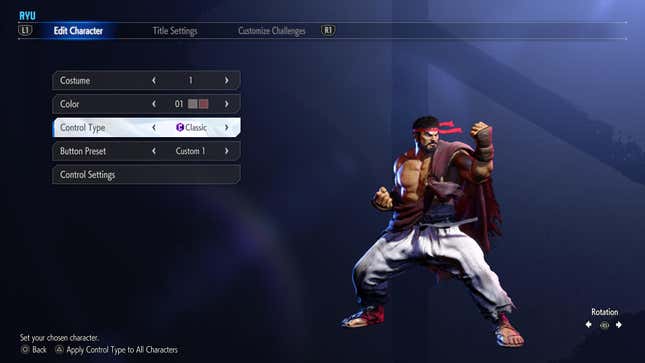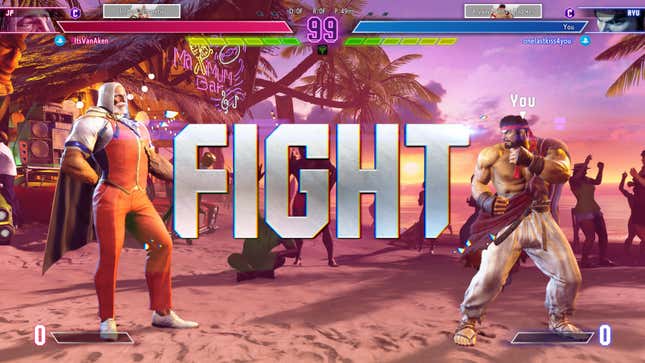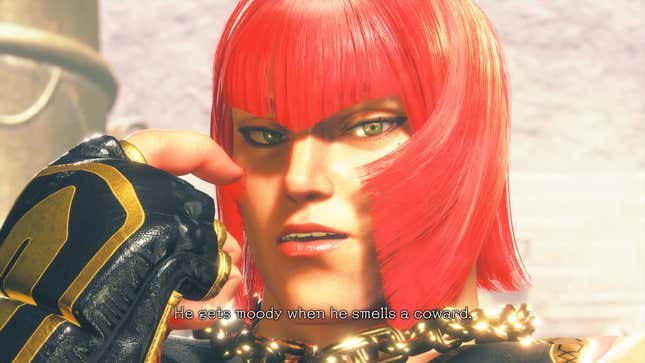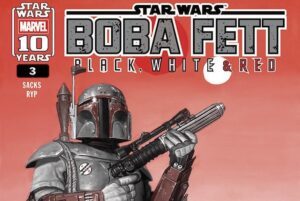Street Fighter 6 has a lot of modes to check out and knobs to turn, to the point where it might seem overwhelming if you don’t know where to start. The sickest of fighting game sickos will likely head straight for the training room to discover the finer points of their preferred fighter and figure out the matchups, but for the rest of us, here are a few tips for getting started, whether you’re a seasoned veteran or just hitting the streets.
Immediately change your graphics settings
For some reason, the console versions of Street Fighter 6 default to “Resolution Mode” instead of “Performance Mode.” This means the game will prioritize graphical fidelity over framerate in certain modes, like World Tour. So the game might look better, but it will run at 30 frames per second rather than a smooth 60. Any fighting game player will tell you that framerate is everything and it should be prioritized over all else because of just how reactive you have to be, so switch to Performance Mode first thing after you boot up Street Fighter 6.
On PC, meanwhile, there are no pre-set performance profiles and the game defaults to the standard 60fps. However, you can also increase the maximum framerate to 120, which is recommended if your PC has enough power. Also be sure to check the game’s resolution, which seems to default to 1080p even when you have a higher-res monitor.
Give every character a shot before settling on a main
If you’re new to Street Fighter and haven’t picked out your favorite based on past experience, it might be hard to suss out who you want to play as. If you have previous fighting game experience, you might gravitate toward certain characters based on their archetypes. For example, maybe you typically play grapplers and like to get in close so you might gravitate toward Zangief or Manon.
But if you don’t have any frame of reference for who you might like, sometimes the easiest way to feel out characters in a fighting game is to just try them out. Street Fighter 6 has a fair amount of tools to give you a taste of how characters play, from an arcade story mode to dedicated character guides. You’ll also be taking pieces from each of their movesets when customizing your character in the World Tour mode. Whatever avenue you choose to familiarize yourself with the roster, it’s always worth giving everyone a fair shot. You never know who you’re going to click with until you try them out, so be open to the experience of testing out characters and matchups before going hard on a specific fighter.

Change your online character and your control scheme to Classic
One of the big draws of Street Fighter 6 for casual players is it has two control schemes. One is called Classic and features the typical quarter circles and charge inputs of previous Street Fighter games. Then there’s the “Modern” control scheme, which has ultra-simplified inputs—think special moves from a single button press—at the expense of modestly decreased damage output.
If you like the simple Modern controls then you’re probably already set, as the game defaults to them across all modes. However, if you want something more along the lines of past games, as most returning players will, you’ll need to change it before you start fighting, and in a couple places. The first, most far-reaching toggle you’ll need to switch is in the Options menu under Controls, which will let you change from Modern to Classic controls for both players. However, for some reason, Street Fighter 6 doesn’t apply this setting to its online fights.
To change your control scheme for online play, you’ll have to maneuver through some decidedly unclear menus. Start by pausing the game in either the main menu or an online lobby and going to Profile. This will bring up your Fighter Profile, which will default your primary character to Luke. In the bottom-left corner you’ll see an option for “Battle Settings,” and here is where you can change your preferred online character, your matchmaking settings, and your control schemes. Jump over to the Character tab and you’ll see all the characters in the roster. Pick your favorite and that will be the one you use in online battles.
While you’re there you’ll likely want to switch all the other characters to Classic controls, too. You’ll need to press the “Update Character Settings” button for each of them. It’s a lot of button presses and menu scrolling to get there, but if you don’t take the time, you’ll load up a character online only to find none of their buttons do what they’re supposed to do.
Consider disabling the commentators
Capcom touted play-by-play commentators as one of Street Fighter 6’s big features, but while having pros narrate your fights might sound cool, in practice, it can get a little awkward. I tried both a single commentator and duos, and while I don’t think either experience is really worth having someone talk over the fight’s audio cues and banger soundtrack, having only one person narrating the match is the better experience. When you have two commentators, the tracks make half-hearted attempts at banter, but the discussion never sounds natural, and it’s easy to hear the flaws when they’re trying to sound coherent. Character names and moves are almost never called out with any specificity, and the commentary generally feels detached from the specifics of what’s going on in the fight. so the whole ordeal is hollow. It’s a fun idea, but the implementation never quite gets there. Sometimes the matches just speak for themselves better than any pre-recorded commentary can.
Turning off the commentator is easy enough in standard matches, as it shows up in the menu as you set them up. For online matches, you’ll have to open your battle settings and tab over to the “Other” menu. Just swap the Commentary Settings to off, or customize them to see if you can find a pair you like.

Remember your custom character’s physical appearance affects gameplay
In the World Tour mode, you create an original character whose moveset is made up of special moves drawn from the main fighters’ repertoires. However, while your custom avatar’s equipment, moves, and level will affect how they play, your appearance will, as well. For example, create a shorter character and they’ll have a smaller hitbox, but their kicks won’t reach as far. If you create a giant hulking beast of a fighter, they’ll have more reach but your opponents’ pokes will connect much easier.
I made my character look like me and wasn’t concerned about whether or not he was competitively viable. And really, I don’t think anyone should. Make your weirdest little guy, or make a big beefy lady who can swing Zangief up by his ankles. Or make a character who looks like you. Do what your heart desires, but do keep in mind that your character’s size does affect spacing and other things worth considering in a fight.
Drive Gauge moderation is key
One of Street Fighter 6‘s big additions is the Drive Gauge, which is used for things like Overdrive Attacks (the equivalent to EX moves) and your parry. The Drive Gauge is abundant and will fill up pretty quickly as you parry and block damage, but it’s important to not rely on it so much at the expense of your other tools. Sustaining your parry will nullify most attacks, but it will leave you open for a grab or Critical Art ability. If you run out Drive Gauge, whether by overuse of Overdrive or by keeping parry active, you’ll enter a “burnout” state that will not only deprive you of Drive Gauge skills, but also increase your blockstun and open you up to chip damage when blocking your opponent’s specials. Drive Gauge takes a lot longer to recover when you’re in this state, and you won’t be able to use any associated abilities until the bar is full again. So while you might want to go HAM on all the fun Drive Gauge moves, using them with reckless abandon will inevitably bite you in the ass.

Don’t rush to your master of choice in World Tour
For story reasons, your character in World Tour will start out with Luke’s moveset. As you meet other characters from Street Fighter 6’s roster throughout the story, you can ask for them to be your master and teach you their fighting style and special moves. As tempting as it might seem to rush through the game to find your main and learn their moves, World Tour mode’s balance isn’t really scaled for you to do that.
As I mentioned in Kotaku’s review, World Tour can be a real grind. Even when you’re leveled up to a comparable level to your opponents, their HP pool will often be higher than yours and their damage output will be, too. If you try to bulldoze your way through it trying to find Cammy or Ryu, you’re going to run headfirst into walls as the story missions escalate in difficulty. I spent more time than I would’ve liked using Chun-Li’s style as my base before finding my main to study under, but putting in that time helped make reaching the subsequent masters easier.
Use items in World Tour
While a competitive player may groan at the notion, performance-enhancing items are baked into how Street Fighter 6’s World Tour mode balances fights. These consumable boons range from healing items to damage and defense buffs, and you can use them in World Tour fights with no restrictions. If you want a challenge, you can certainly try and force your way through big fights without healing or buffing your character, but broadly, World Tour scales fights with the expectation that you’ll have items on hand with which to heal and power up. You have to pause the game during a match to use them, so it’s easy to forget about. But get into the habit of buffing up your attacks and healing when you’re in a pinch.
Grinding isn’t just fighting
One of the most important resources in the World Tour mode is Miles, Points you acquire through actions like doing quests and just walking around. These are important because they act as your continues throughout the game. For standard fights you encounter throughout the world, continues might not be necessary, but they’re a godsend in story segments like tournaments, where losing one fight without a continue means you have to restart an entire boss rush from the beginning. Earning Miles through side-quests and walking is another part of prepping for big fights that’s just as important as grinding character experience and buying items.

Do not sleep on the social elements
I can’t overstate how good Street Fighter 6’s social elements are. Each master you meet has a relationship meter you fill up by using their attacks, facing enemies who also use them, giving them gifts, and doing their dedicated quests. The higher the meter goes, the more special moves you’ll learn. But more importantly, you’ll also unlock new interactions in which each character will tell you about their life, their training, and their future. These exchanges were my favorite part of World Tour, and while the fighting game grind might be what appeals to you most, don’t sleep on the social aspects. The writing is silly, fun, and helps make these characters feel like more than their moveset, which is something Street Fighter 6 excels at.
























